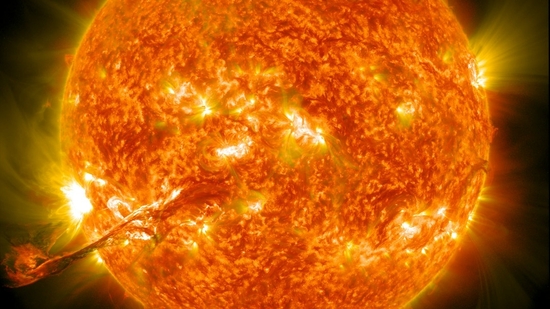Tenerife, Spain – In a groundbreaking advancement for solar science, researchers have unveiled the most detailed images ever captured of the Sun — now available in 8K resolution. Using the Vacuum Tower Telescope (VTT), located at the Observatorio del Teide in Tenerife, scientists can now observe solar surface activity with unprecedented clarity.
Developed by the Leibniz Institute for Astrophysics Potsdam (AIP), the VTT allows astronomers to overcome a long-standing challenge in solar imaging: choosing between high resolution or a wide field of view. With this cutting-edge technology, they can now achieve both simultaneously.
8K Resolution Reveals Sun’s Surface Like Never Before
The VTT captures 100-image exposures at 25 frames per second, producing frames of 8000 x 6000 pixels. These can be restored into high-fidelity 8K images. The telescope can detect solar structures as small as 100 kilometers wide — effectively filtering out distortions caused by Earth’s atmosphere.
These detailed visuals offer a deeper understanding of dynamic solar phenomena such as sunspots and solar flares, which result from plasma movement and magnetic field activity. Tracking these features is crucial for forecasting space weather, which can affect satellites, communication systems, and even power grids on Earth.
A Game-Changer for Solar Research
“The ability to observe wide-scale structures up to 200,000 km while still resolving fine details is a major leap,” says Rolf Schlichenmaier from the Kiepenheuer Institute for Solar Physics (KIS). Specialized filters now help identify even the smallest magnetic signatures within the photosphere and chromosphere, advancing the study of solar magnetic fields and active regions.
The VTT is also integrated with an advanced suite of instruments including:
- HELLRIDE (HELioseismic Large Region Interferometric Device)
- LARS (Laser Absolute Reference Spectrograph)
- FaMuLUS (Fast Multi-line Universal Spectrograph)
These tools allow for a comprehensive analysis of solar dynamics, offering new insights into both short-term solar eruptions and long-term solar cycles.
Teaching an Old Telescope New Tricks
Despite being an older telescope, the VTT has been successfully modernized with next-gen technology. Carsten Denker, head of the Solar Physics Section at AIP, emphasizes, “These results demonstrate how we’re breathing new life into legacy instruments and significantly expanding their scientific capabilities.”
The detailed findings from this research have been published in the journal Solar Physics, opening a new chapter in high-resolution solar observation.
